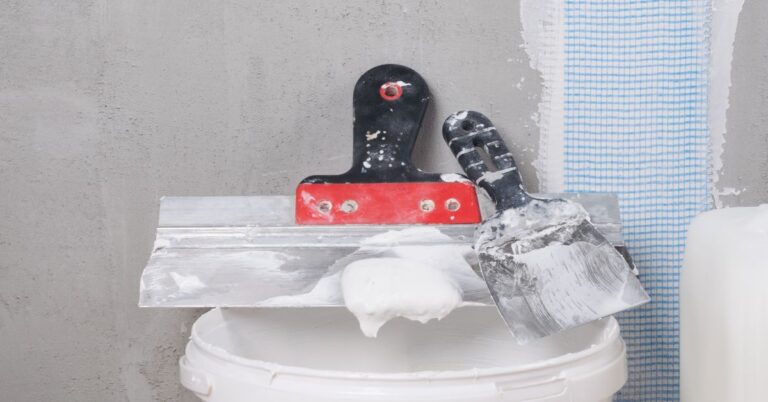Mitre vs Jig Saw: Choosing the Right Tool for Your Woodworking Project
Woodworking enthusiasts often choose between mitre saws and jigsaws for their projects. These powerful tools offer distinct capabilities, each excelling in specific cutting tasks. Mitre saws excel at making precise angled cuts, while jigsaws shine when creating curved and intricate shapes in various materials.
Both tools have their place in a well-equipped workshop. Mitre saws provide unmatched accuracy for crosscuts and angled cuts, making them ideal for framing, moulding, and trim work. On the other hand, jigsaws offer versatility and maneuverability, allowing woodworkers to tackle curved cuts, internal cutouts, and straight lines in tight spaces.
Selecting the right tool depends on the project at hand. A mitre saw is the go-to choice for straight, precise cuts and repetitive angled work. A jigsaw proves invaluable when projects demand flexibility and the ability to cut curves or irregular shapes. Understanding the strengths of each tool helps woodworkers make informed decisions and achieve optimal results in their craftsmanship.
Key Takeaways
- Mitre saws deliver precise angled cuts, while jigsaws excel at curved and intricate shapes.
- The choice between mitre saws and jigsaws depends on the specific project requirements.
- Both tools offer unique benefits and complement each other in a well-rounded woodworking setup.
Overview of Miter Saws
Miter saws are versatile power tools designed to make precise angled cuts in wood and other materials. These saws excel at creating clean, accurate miter and bevel cuts for trim work, framing, and various woodworking projects.
Understanding Miter Saws
Miter saws feature a circular blade mounted on a swing arm that pivots left and right for angled cuts. The blade is positioned above a flat base and fence supporting the workpiece. Most models can rotate 45 degrees in either direction for miter cuts.
Advanced miter saws offer additional features:
- Sliding rails for increased cutting capacity
- Laser guides for improved accuracy
- Dust collection systems
Miter saws come in various sizes, typically 8 to 12 inches, depending on the blade diameter. Larger blades can cut broader and thicker materials.
Types of Miter Cuts
Miter saws can perform several types of cuts:
- Straight cuts: Perpendicular to the board’s length
- Miter cuts: Angled cuts across the board’s width
- Bevel cuts: Angled cuts through the board’s thickness
- Compound cuts: Combination of miter and bevel angles
Miter cuts are commonly used for joining two pieces at an angle, such as picture frames or crown molding. Bevel cuts help create sloped edges.
Compound cuts are valuable for complex joinery in trim work and furniture making.
When to Use a Miter Saw
Miter saws excel in projects requiring precise angled cuts:
- Trim work (baseboards, crown molding, door casings)
- Picture frames
- Window frames
- Deck building (for angled railings and posts)
These saws are ideal for repetitive cuts, as the fence ensures consistency across multiple pieces. They’re beneficial for projects involving angles other than 90 degrees.
While primarily designed for wood, miter saws can cut other materials with appropriate blades:
- Plastics
- Soft metals (with specialized blades)
- Laminate flooring
A table saw might be more suitable for long, straight cuts. Miter saws excel at making quick, accurate, angled cuts in smaller pieces of material.
Essentials of Jigsaws
Jigsaws are versatile power tools designed for making precise curved and straight cuts in various materials. They excel at intricate work and offer flexibility for DIY enthusiasts and professionals.
Understanding Jigsaws
Jigsaws are handheld power tools that use a reciprocating blade to cut through materials. The blade moves up and down rapidly, allowing for precise cuts along straight lines or curves.
These tools are particularly effective for making intricate wood, metal, and plastic cuts. Jigsaws can create internal and external curves, making them ideal for detailed work.
Most jigsaws feature adjustable speed settings, allowing users to match the tool’s performance to the material being cut. This versatility makes jigsaws suitable for a wide range of projects.
Jigsaw Blade Options
Jigsaw blades come in various types, each designed for specific materials and cutting styles. Wood-cutting blades typically have more prominent, more widely spaced teeth for efficient cutting.
Metal-cutting blades feature smaller, finer teeth to handle more rigid materials. Plastic-cutting blades often have a specialized tooth design to prevent melting or chipping.
Blade length and width also vary. Longer blades are better for thicker materials, while narrower blades excel at tight curves. Some blades are designed for plunge cuts, allowing users to start cuts in the middle of a workpiece.
When to Opt for a Jigsaw
Jigsaws are the tool of choice for projects requiring curved or intricate cuts. They excel at cutting circles, arcs, and other non-linear shapes in wood, particleboard, and plywood.
These tools are also helpful for making cutouts in countertops or furniture. Their ability to make plunge cuts allows users to start cuts away from the edge of a workpiece.
Jigsaws can cut sheet metal and thin pipes in metalworking. They’re also practical for cutting acrylic sheets and PVC pipes in plastic. While not as fast as circular saws for long straight cuts, jigsaws offer precision and versatility across various materials and cutting styles.
Comparing Performance and Precision
Miter saws and jigsaws offer distinct advantages in performance and precision for different cutting tasks. Their capabilities vary in accuracy, maneuverability, and versatility across materials.
Accuracy and Cut Quality
Miter saws excel in making precise, straight cuts. They provide clean, smooth finishes on wood and other materials. The fixed blade and guided arm ensure consistent angles and depths.
Jigsaws offer more flexibility but may sacrifice some precision. They can make curved and intricate cuts that miter saws cannot. However, their handheld nature can lead to less uniform results.
Miter saws are the clear choice for perfectly straight cuts. Jigsaws shine when cutting complex shapes or in tight spaces.
Handling and Maneuverability
Jigsaws are highly maneuverable tools. Their compact size and ergonomic design allow for easy handling in various positions. Users can guide the blade along marked lines or freehand for custom shapes.
Due to their stationary design, miter saws have limited maneuverability. They’re best suited for repetitive cuts at set angles, and their lack of portability restricts their use to a fixed workstation.
Jigsaws offer greater control for intricate work. Miter saws provide stability for consistent, repeatable cuts.
Versatility in Material Cutting
Miter saws primarily cut wood and some plastics. They excel at trim work, framing, and other carpentry tasks. Some models can cut thin metal with specialized blades.
Jigsaws are more versatile. They can cut wood, metal, ceramics, and plastics. Different blade types expand their capabilities. Jigsaws can make plunge cuts and work on larger sheets of material.
Jigsaws offer broader applicability for varied projects, while miter saws are superior for specific woodworking tasks. Both tools have their place in a well-equipped workshop.
Practical Applications and Project Types
Miter saws and jigsaws excel at different types of cuts and projects. Each tool has specific strengths that make it ideal for certain woodworking tasks and applications.
Best Uses for Miter Saws
Miter saws excel in projects requiring precise angled cuts. They’re essential for trim work, framing, and crown molding installation. Carpenters rely on miter saws to cut baseboards, door frames, and window casings at exact angles.
Miter saws create tight-fitting joints for picture and cabinet face frames in furniture making. Their accuracy is crucial for cutting deck boards and railings. Miter saws also excel at crosscutting lumber to length for various construction projects.
For DIY enthusiasts, miter saws simplify tasks like building shelves or cutting wood for craft projects. Their ability to make repetitive cuts quickly and accurately speeds up work on larger projects.
Optimal Jigsaw Applications
Jigsaws excels at cutting curves and intricate patterns in wood, plastic, and thin metal. They’re ideal for creating decorative elements in furniture and cabinetry. Woodworkers use jigsaws to cut out shapes for chair backs, table legs, and ornamental panels.
Jigsaws are perfect for home improvement, cutting holes in countertops for sinks, and making custom-shaped shelves. They’re also invaluable for fitting flooring around obstacles or cutting irregular shapes in drywall for electrical boxes.
Jigsaws also handle straight cuts when a circular saw is too large or unwieldy. They help trim door bottoms or cut narrow strips off boards. For crafters, jigsaws enable detailed reductions of thin materials for artistic projects and signage.
Safety and Maintenance Considerations
Proper safety precautions and regular maintenance are required when using mitre saws and jigsaws. These practices protect users and extend the lifespan of power tools.
Keeping Safe While Cutting
Always wear safety glasses to shield your eyes from debris. A dust mask prevents inhalation of fine particles. Secure loose clothing and tie back long hair to avoid entanglement.
Keep hands clear of the blade path. Use push sticks or clamps when cutting small pieces. Ensure proper blade installation and tightness before each use.
Implement a dust collection system to minimize airborne sawdust. This will improve visibility and reduce respiratory risks. Clean the work area frequently to prevent slip hazards.
Unplug tools when changing blades or performing maintenance. Never disable safety guards or features on the saw.
Maintaining Your Power Tools
Clean saws after each use to prevent dust buildup. Use compressed air to clear vents and motor housings. Wipe down surfaces with a dry cloth.
Inspect power cords regularly for fraying or damage. Replace if compromised. Check blade condition before cutting. Replace dull or damaged blades promptly.
Lubricate moving parts according to manufacturer instructions. This ensures smooth operation and reduces wear. Tighten any loose screws or fittings.
Store tools in a dry place to prevent rust. Use blade guards during storage to protect cutting edges. Follow the user manual for model-specific maintenance tasks.




